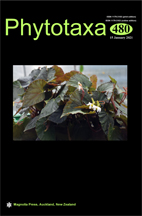Abstract
The Hymenasplenium obliquissimum group contains the widespread H. obliquissimum and several geographically restricted species, including H. retusulum, H. wuliangshanense, H. latidens, H. changputungense, H. quercicola, H. szechuanense, H. furfuraceum, H. adiantifrons, and H. filipes. However, the taxonomy of this group is still unclear and needs to be revised because some entities were treated infraspecifically or as synonyms and the validation of some species still needs to be assessed. To formulate a natural classification and investigate the relationships in this group, we collected and studied specimens of species related to the H. obliquissimum group and obtained specimens of species described by Ching at their locus classicus in southwestern China. An integrative taxonomic approach was taken to delimit species in the group using cytological, morphological, and DNA sequence data. Specifically, in the phylogenetic analyses, the H. obliquissimum group was recovered as a monophyletic group, comprising five principal chloroplast lineages. Based on our inferences, we provided taxonomic implications of chloroplast lineages discovered in this study and suggested possible reticulate evolution in the H. obliquissimum group which was interpreted by the incongruence of chloroplast and nuclear phylogenies. Further studies to strengthen the taxonomic of taxa especially those with the co-existence of different ploidy levels are still warranted.

